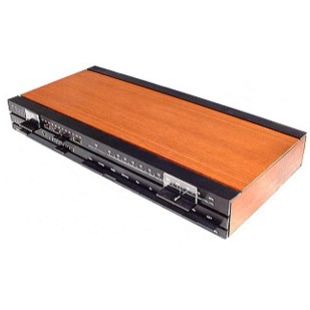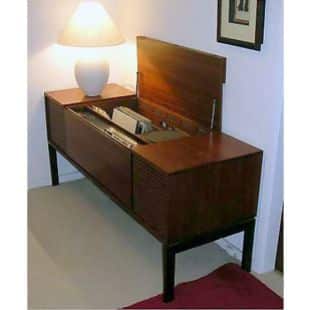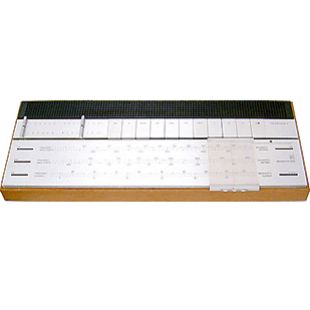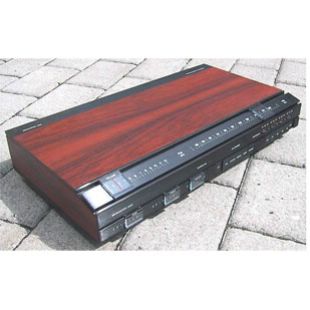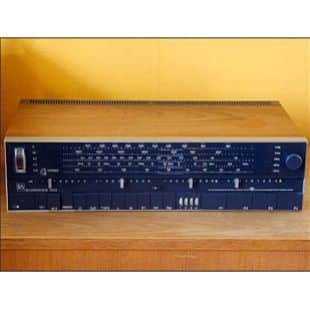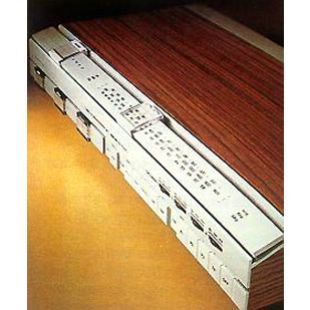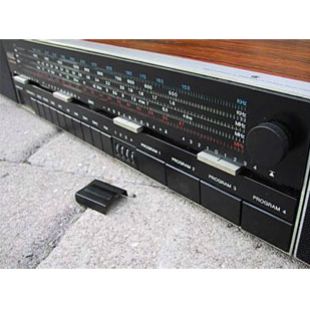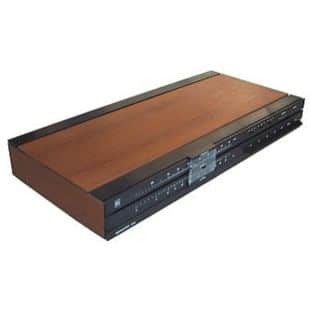BeoMaster 1001

This top-operated receiver was not just exciting in appearance, it was also designed to facilitate operational comfort.
Primary controls were easily accessible, while the rarely used secondary regulators were concealed. The large tuning scale had calibrations in MHz and channel numbers. Tuning accurately to a desired station was child’s play because the large transparent slider was also provided with three small thumbwheels which assisted fine tuning.
Your three favourite stations could be pre-set by individual controls which were safely concealed beneath a sliding panel on the upper right hand side of the set. Subsequent programme selection was by easy pushbutton. The use of Field Effect Transistors (FETs) and Automatic Frequency Control (AFC) ensured optimum FM reception and compensated for weak signal conditions during tuning.
The amplifier’s power output was 2×15 watts RMS or 40 watts total music. Ambiophonic reproduction could also be obtained simply by connecting four loudspeakers, 2 in front and 2 to the side. In this way you could obtain an ‘extended’ stereo reproduction, a more realistic recreation of musical experiences recorded, for example, in a concert hall, because ambience or room information were included as well as direct musical information. There was a push button, the ‘ambio filter’, by which you could damp or reduce the highest tones (treble) reproduced in the side speakers. This was sometimes desired since the reflected sound which is reproduced in the side speakers is mostly mid-range tones. By damping high tones in the side speakers you could obtain a more natural sound reproduction.
Balance regulation was solved in a unique way in Beomaster 1001. Volume was controlled by two sliders, one for right and the other for left channel. The two sliders cold be operated together with one grip or separately, so that the balance between the channels could be adjusted as desired. The receiver’s slim, compact cabinet allowed several playing positions. Mounted on a wall (with special mounting bracket), slightly slanted (by special supports fitted to its base), or the traditional horizontal position. There were connections for record-player (switchable between high and low ohms), tape-recorder, headphone and four loudspeakers. A light indicated when the receiver was switched on, when the FM programme source was in use and whether a programme was in mono or stereo.
Receivers and amplifiers with the ambio function were products which, apart from stereo, could also reproduce the ambience or sound information of a room. Ambient information was included on most stereo vinyl recordings but could not be reproduced by a sound system with two loudspeakers or an ordinary stereo amplifier. Bang & Olufsen systems with the ambio function had facilities which electronically subtracted the difference signal (i.e. the difference between left and right channels) which contained ambient information. This information was fed into two extra loudspeakers which were placed as side speakers in a room. Ambiophony was an extension of stereo reproduction and enhanced the sense of realism. It could be used with nearly all stereo programme materials.
FM room aerial
In order to receive FM programmes, an FM aerial must be connected to the Beomaster 1001. Within a certain radius of the transmitter you could use the Bang & Olufsen FM room aerial, type 8902010. This aerial was easily fitted and the telescopic elements could be pulled out and positioned favourably.
Wall mounting
If desired, the Beomaster 1001 could be mounted on a wall by means of a special bracket. type 8920243. The bracket was screwed onto the wall and the receiver easily hung in position.

